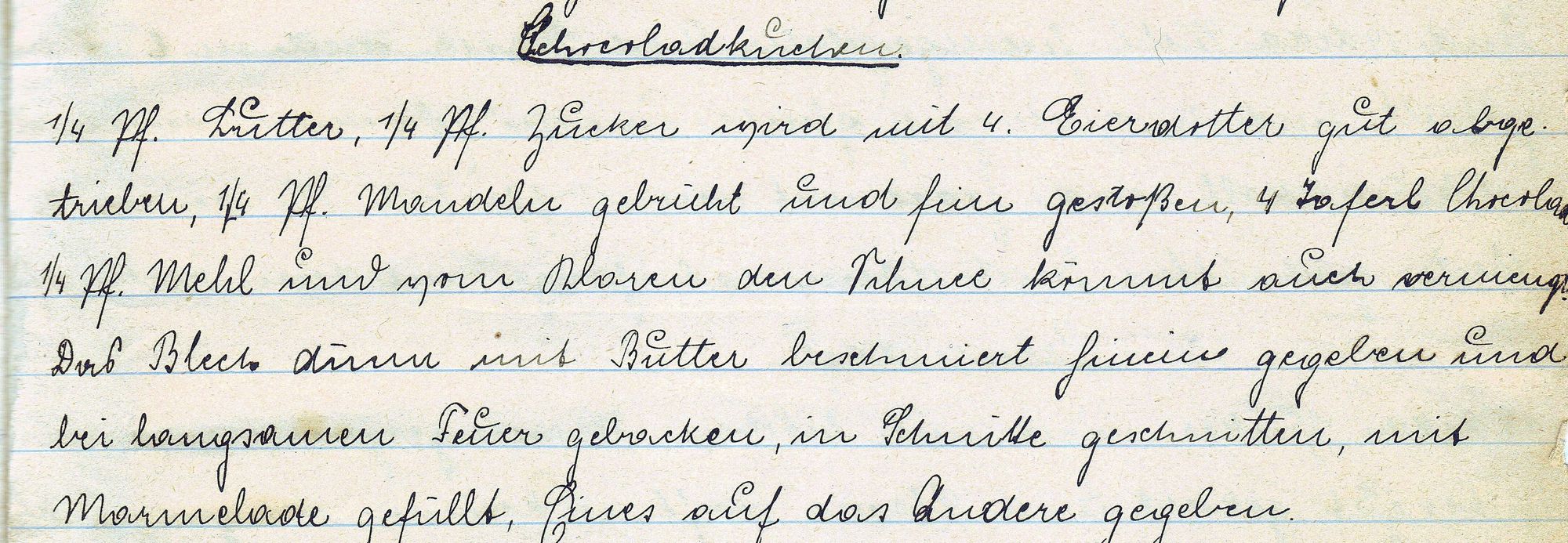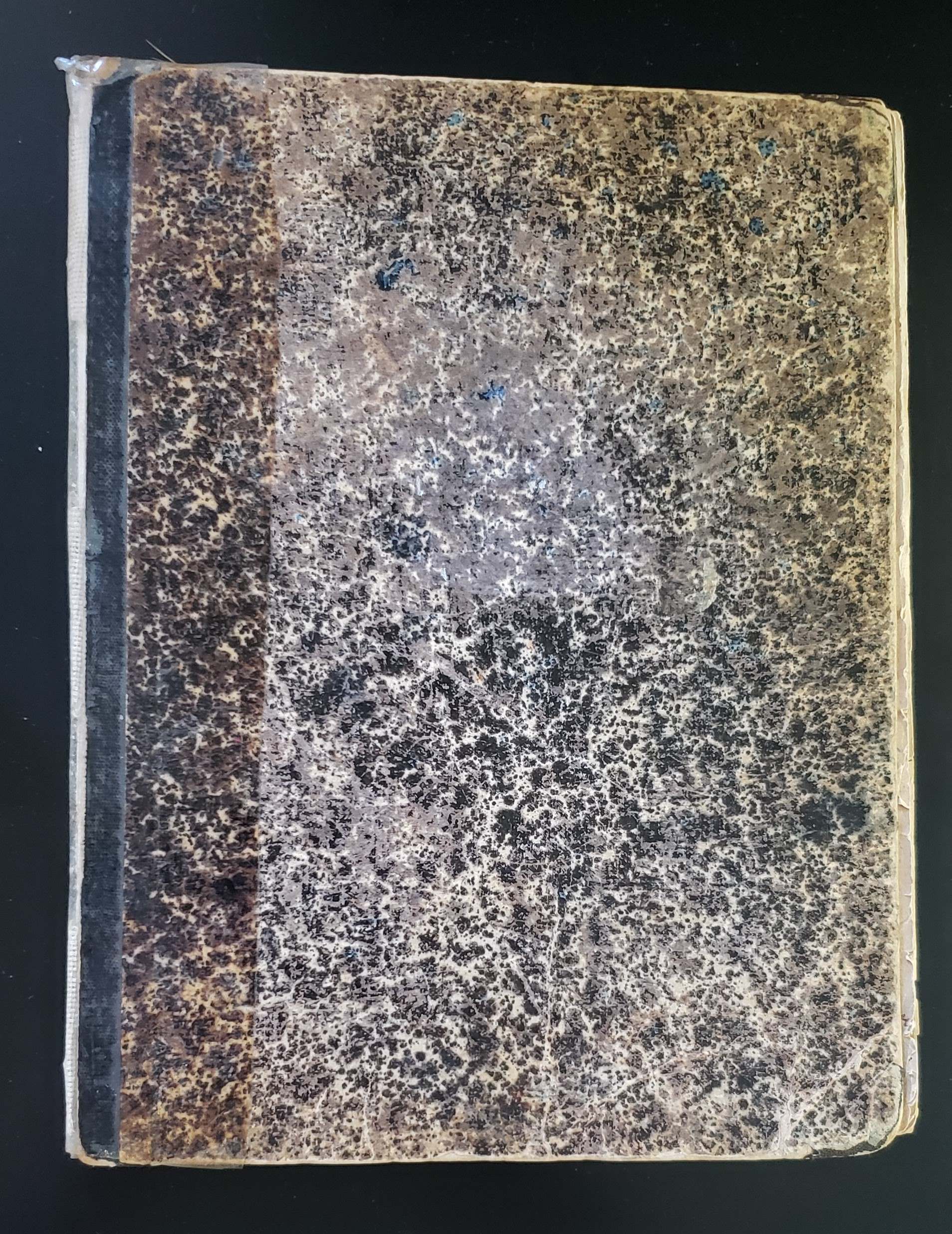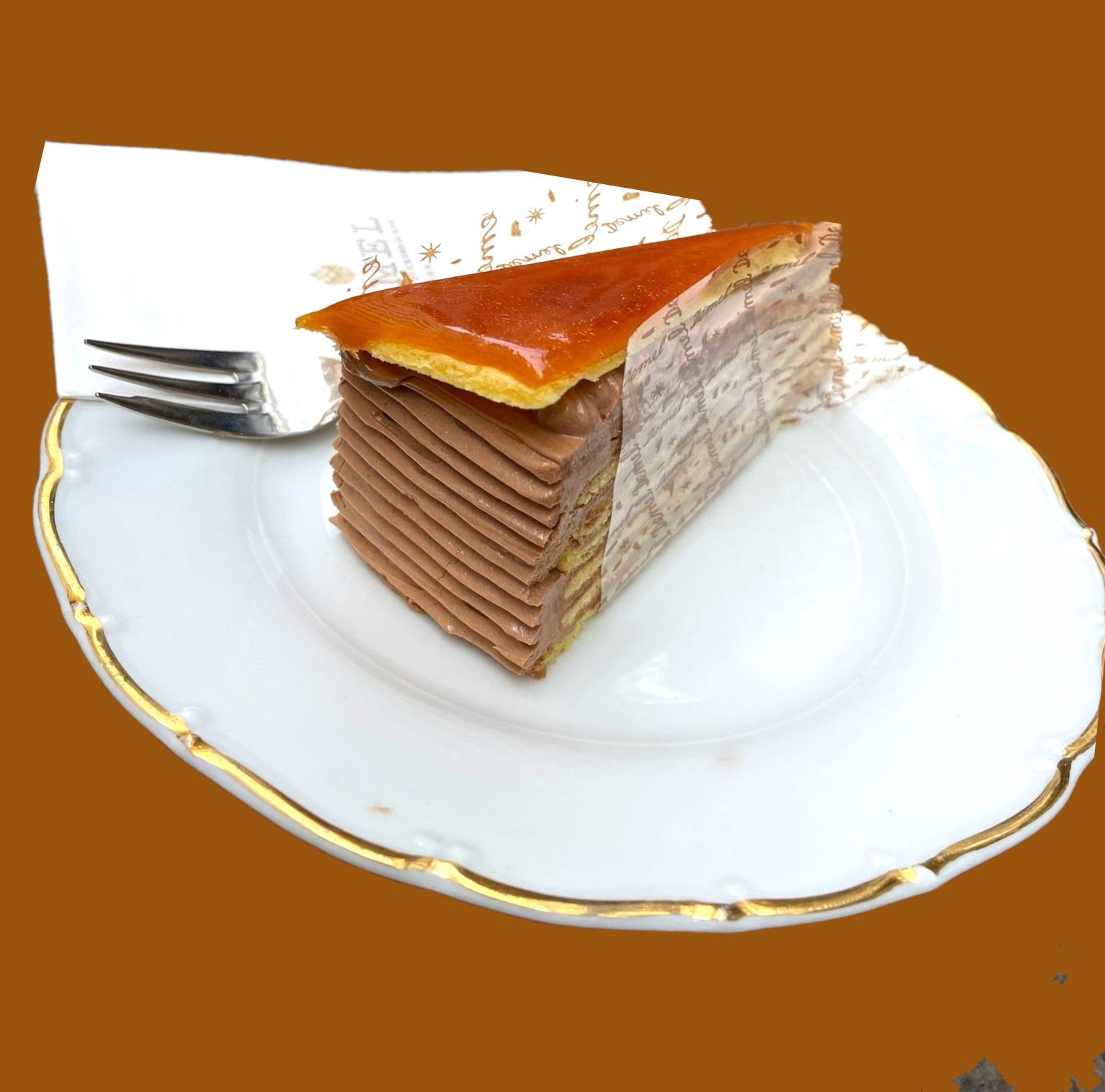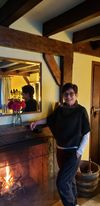The recipe notebook

I received this notebook from my cousin Georges when he visited from Belgium. He just said that it was found with my grandmother's belongings after her death.
The yellowing 80 pages of the notebook has more than 300 recipes in very clear and orderly written dense handwriting. The recipes are mostly cakes, desserts and other pastries.
My grandmother, Ilona Binetter (Adler), was born in 1886 in a Slovakian small town, then part of Austro-Hungary. She married in 1904, at the age of 18, and started collecting recipes as she began her married life with my grandfather. The recipes are in German and Hungarian, as she was fluent in both languages from her bilingual background.
My grandmother was very young when she married Fülöp Binetter, and moved to his hometown of Nyitra, about 32 km from Topoľčany. My Grandfather was an architect, and his family had a lumber wholesale business. Their first child was born in 1905, and two more sons in 1907 and in 1909.
She kept collecting recipes regularly throughout her life, in good times and bad. it is obvious from the changing handwriting and the styles of the recipes. Reading the recipes and experimenting with baking was a thrill for me and it presented a great insight into the ingredients, tools and baking conventions in Austro-Hungarian traditions of that bygone era.
During WWI, my grandfather served in the Austro-Hungarian army somewhere in Albania. Those years must have been difficult for my grandmother, having to raise alone their teenage boys. After the end of WWI and the dissolution of the Austro-Hungarian Empire, her life circumstances changed - moving to Bratislava and then to Zilina. Sometime, around 1924 the family moved to Budapest, Hungary.
My grandparents had a relatively comfortable life in Budapest, judging from photos taken at home and on vacations throughout Europe – holidays with friends in Opatija, Croatia, Nice and Monte Carlo in France, and skiing in Italy. I wonder if she kept baking as much as she did when her children were small.
By 1939 life became very difficult with all the anti-Jewish laws issued by the Hungarian government and the German occupation of Budapest in 1942. The war years were very difficult but the family survived.
My grandmother died in 1976 in Antwerp, Belgium. Among her belongings was this recipe notebook, which I received many years later from my cousin Georges.


My grandmother's signature on the notebook
It took me a couple of years to decipher the content and translate the recipes into English, which presented me with great challenges. The German language is more distinct about actions like mixing and whipping, according to intensity. The same goes for grinding nuts - is grinding pounded, crushed, grated, ground or finely ground? And then there are the names of ingredients that do not exist today in our every day or names not used anymore in modern German.
The discovery of the recipe notebook launched a year-long project to adapt the 100-year-old recipes to the current format, units of measure, tools and ingredients. It took a lot of baking, tasting and trying and resulted in a book including the most delicious and quintessential Hungarian and Austrian pastry recipes.
The original manuscript of the recipe notebook is now in the archives of the Leo Baeck Institute in New York. The archive link.
[German and Hungarian cake recipes]: collected between 1905 and 1960 / by Ilona Binetter (Adler).Author/Creator Ilona Adler Binetter 1886-1976 Description German and Hungarian pastry recipes recorded in a handwritten notebook by Ilona Binetter, nee Adler. Her granddaughter Judith Garfinkel published a selection of these recipes with annotations, contemporary measurements, and photos under the title "Pastries from the past: From my Grandmother's Recipe Book" (2022)

